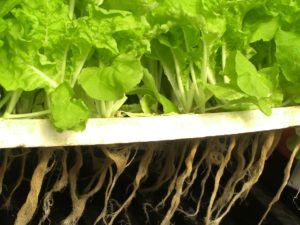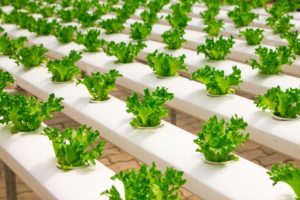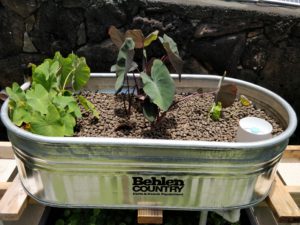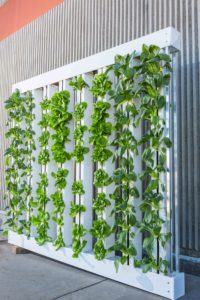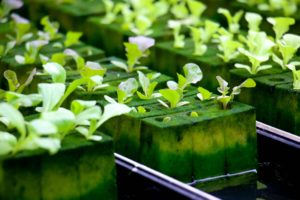Types of Aquaponics Systems
There are many types of aquaponics systems, and most of them have their roots (pun intended) in Hydroponics.
As far as fish tanks go though, they are all usually just a different version of a standard fish tank. In other words, the fish tank itself in an aquaponics system doesn’t functionally change that much from system to system. They are all practically different versions of the same item; A large container that houses the fish and the water they live in.
However, things can become vastly different when it comes to the growth of plants. The following is an overview of some types of aquaponics systems and how they are used.
Deep Water Culture
Deep Water Culture involves the submerging of a plant’s roots in water at all times. This water is usually highly oxygenated to prevent disease and rot of the roots of plants that are susceptible to such things with constantly flooded roots. This way of growing plants is commonly accomplished with a raft like system that suspends plants on the surface of the water with roots submerged in the water below the raft.
Nutrient Film Technique
Nutrient Film Technique, also known as NFT, is another system of growing plants where water is constantly flowing (albeit slowly in most cases) along a channel in which plants and their roots are suspended. The water is pumped through the NFT channels where the nutrients are absorbed by the plants’ roots on their way through the system.
Media Grow Beds
Media grow beds are most commonly used in at-home aquaponics systems. They consist of a container or grow bed of some kind (often a stock tank of some sort) filled with a growing media. This media is typically made up of rocks or gravel or LECA (lightweight expanded clay aggregate). Water is pumped from the fish tank to this grow bed in order to water and feed the plants grown within it, and is then released back into the fish tank.
Vertical / Terrace
Vertical growing has become popular in hydroponics to take advantage of space in a given square footage. This method utilizes towers or terraces in which water is pumped to the top of the structure and is then channeled through the roots of plants which are suspended in the structure. Vertical growing allows higher density output of plants and vegetables in a given area because it takes advantage of the normally unused vertical space.
Hybrid Systems
A hybrid aquaponics system consists of the above types of systems, or others, combined together. Often times, growers will utilize media grow beds and deep water culture systems in unison. This type of system offers flexibility in the types of plants that can be grown as well as additional filtration and nitrification of fish waste in the system via the media grow bed while maintaining the high density output, cost-efficiency, and ease of growing in a deep water culture system.
